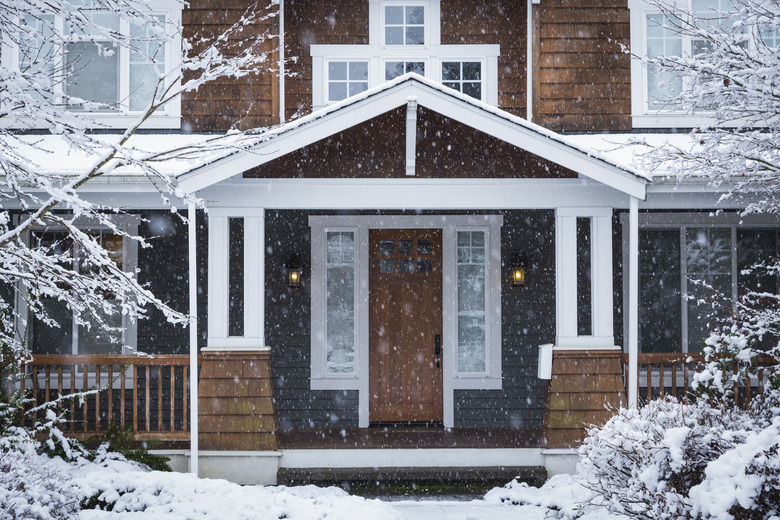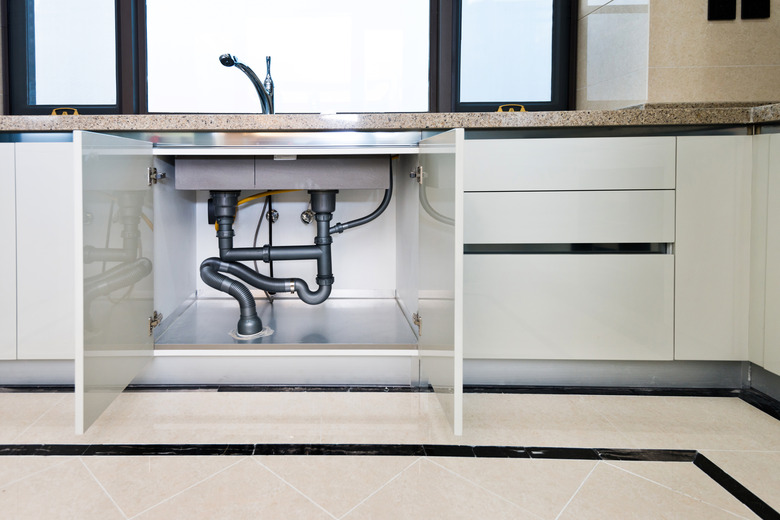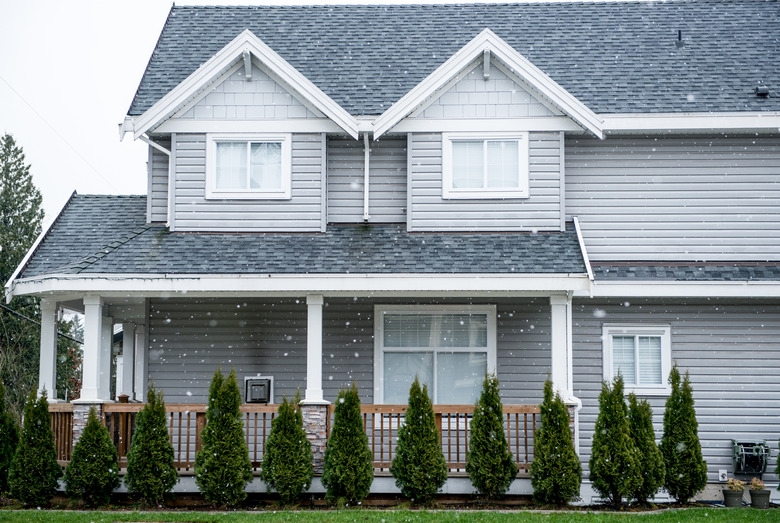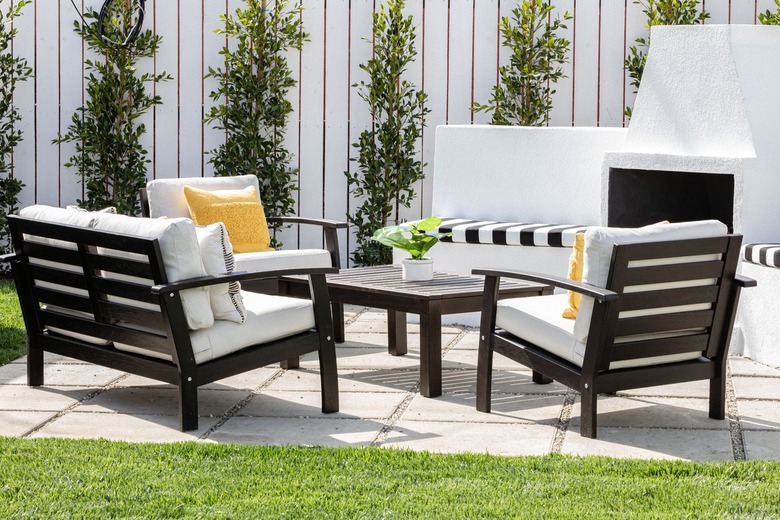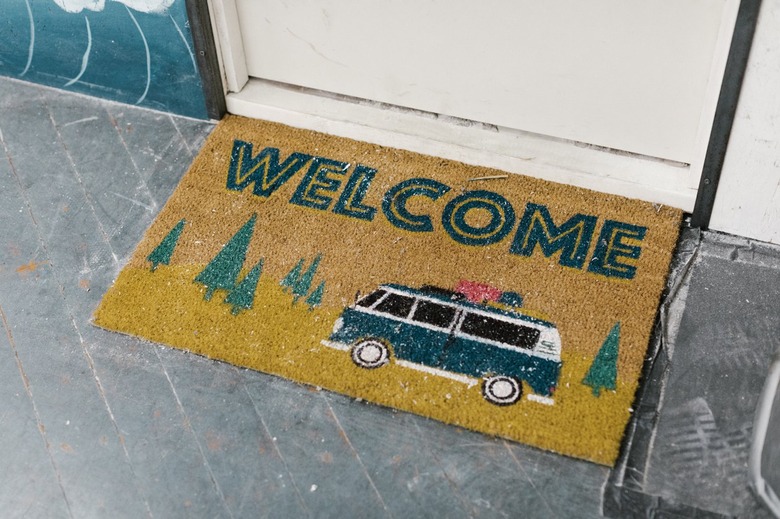Prepare Your House For Freezing Temperatures — A Checklist
We may receive a commission on purchases made from links.
Winter is coming, and it's bringing freezing temperatures with it. As recent weather patterns have shown, even people in fairly warm areas, like Texas, can find themselves facing harsh winter weather (and unexpected power outages) for which they may not be prepared. Extremely cold weather may be hard on you, but it's also hard on your house and potentially your heating bill. If you know old man winter is on his way, there are several steps you can take to prepare for his arrival.
1. Check Your Furnace
1. Check Your Furnace
A cold snap is not the time to learn you have a problem with your furnace. Have your furnace cleaned and your heating system inspected by a professional before cold weather hits. Even better, set yourself up on an annual maintenance plan with a local HVAC company so your furnace gets a good once-over each year even if you forget to schedule it.
2. Examine Your Backup Heating Plan
2. Examine Your Backup Heating Plan
If you have a fireplace or woodstove that you plan to use for heat during a power loss, take the time to inspect the chimney and clean it if necessary. Pull your space heaters out of the garage or attic as well and give them a test run.
3. Change All the Batteries
3. Change All the Batteries
Freezing weather sometimes means power outages, so be prepared. Change the batteries in your flashlights, as they're a safer way to get light than candles. Check the batteries in your smoke alarms and carbon monoxide detectors too. Carbon monoxide detectors are always important, but they become even more crucial if you're using your fireplace for a heat source.
4. Caulk and Seal
4. Caulk and Seal
Take a look at your windows and doors. If you feel a draft or see that your old caulk is failing, recaulk to keep cold air out and warm air in. Replace any worn-out weatherstripping as well.
5. Cover the Windows
5. Cover the Windows
If your windows are drafty and replacing them isn't in the budget, cover them with plastic sheeting to prevent air leakage. Pull your blinds shut and draw the curtains during freezing temperatures to create as many physical barriers between yourself and the cold as possible.
6. Protect Your Plumbing
6. Protect Your Plumbing
When freezing temperatures strike, open the cabinet doors beneath the kitchen and bathroom sinks. This will allow warm air from inside your home to circulate around them and reduce the risk of frozen pipes. If you're still concerned, turn all of your taps open to a trickle to keep the water in your pipes moving. The last thing you want is to have to call a plumber in the middle of a dangerous winter storm.
7. Know Your Shutoffs
7. Know Your Shutoffs
Now is the time to learn about or get reacquainted with the valves that turn off your home's water, gas and electricity. If pipes do freeze and burst, shutting off the water can help reduce the mess. If you have to evacuate for any reason, local authorities may advise you to turn off your gas before you go.
8. Trim Your Trees
8. Trim Your Trees
Tree limbs can get incredibly heavy when weighed down with ice and snow. If you have any dead limbs in your trees, prune them out before winter weather drops them onto your home.
9. Test the Snowblower
9. Test the Snowblower
Sometimes, snow accompanies freezing weather, and removing it with a snowblower is a lot easier than shoveling. If you have a snowblower, make sure it starts and give it a tune-up if necessary.
10. Test Your Sump Pump
10. Test Your Sump Pump
As freezing temperatures start to climb, snow and ice around your home will begin to melt. Make sure your sump pump is up to the task of keeping your home dry if some of that water finds its way into your basement.
11. Check the Roof
11. Check the Roof
You count on your roof to keep snow, ice and water out of your home. Check the shingles before freezing weather and tack down or replace any that are loose. If you have a flat roof, remove fallen leaves and other debris that may hold water during a freeze and thaw cycle.
12. Seal Patios and Driveways
12. Seal Patios and Driveways
Concrete patios and driveways are prone to cracking during cycles of freezing temperatures followed by warmer weather. To protect yours, seal any cracks in the fall and then apply a concrete sealer to help keep out snow, rain and ice.
13. Assess Your Insulation
13. Assess Your Insulation
Proper insulation is critical to keeping your home warm during cold spells. Check to make sure that the insulation is adequate in your home's attic and crawl space and in good shape. If not, add another layer.
14. Reverse Your Ceiling Fans
14. Reverse Your Ceiling Fans
During the summer months, you want the blades on your ceiling fan to turn counterclockwise. In the winter, switch them so they spin clockwise instead and push the rising warm air down into the room. Most ceiling fans make it simple to change the direction of the fan blades by simply flipping a switch.
15. Cover Your Air Conditioner
15. Cover Your Air Conditioner
Central air conditioning units have a compressor that sits outside. The unit is fairly rugged since it's meant to live outdoors, but falling icicles and snow piles sliding off the roof can hit with some force. To protect your unit, simply set a thick piece of plywood on top of it and hold it in place with a few bricks.
16. Clean Your Gutters
16. Clean Your Gutters
When the snow and ice on your roof melt, all that water has to go somewhere. A clean gutter system ensures that the water is funneled to a safe spot rather than running down the house and into your basement. Make sure your gutters are clear and clog-free before freezing temperatures start to creep in.
17. Check Outdoor Lighting
17. Check Outdoor Lighting
Sometimes, ice is hard to see, so it's important to make sure your outdoor lighting is functioning well. Install some fresh light bulbs. A well-lit exterior can help prevent slips and falls when things get icy.
18. Secure Outdoor Handrails
18. Secure Outdoor Handrails
If you have steps leading up to your home, ensure that the handrail next to them is strong and secure. If you or a guest slips on icy steps, your first instinct will be to grab the rail. Make sure it can support your weight.
19. Remember the Patio
19. Remember the Patio
If you have patio furniture, choose a sunny day to cover it. You don't want to trap any moisture under your furniture covers so be sure it's a dry day. A cover won't stop your patio furniture from getting cold when the temperature drops, but it will keep water from snow and ice off the furniture to prevent rust or other damage.
20. Get in the Garden
20. Get in the Garden
If you have potted plants in your garden, consider bringing them inside. You can also bury the plants in the garden, pot and all, to try and offer them some insulation against freezing temperatures. If your pots contain only annual plants, empty them before winter so they don't crack.
21. Insulate Your Hot Water Heater
21. Insulate Your Hot Water Heater
Hot water heaters are often tucked away in closets or basements where there may not be much heat. To help keep your energy costs down, wrap the tank on your hot water heater with an insulating blanket so it doesn't have to work so hard during freezing temperatures.
22. Consider a Generator
22. Consider a Generator
A generator can allow you to keep the lights on and run a space heater in the event of a power outage. It's also a good way to keep any necessary medical equipment in your home running if the power goes down. If you're thinking about a generator, install it and learn how to safely use it now so you're ready if you need it.
23. Stock Up on Salt and Sand
23. Stock Up on Salt and Sand
When freezing temperatures and inclement weather are in the forecast, ice melt, sand and kitty litter disappear from store shelves. Stock up on these items in late summer or early fall to beat the rush. Remember that sand and kitty litter can help create grip at home and on the road. Throw a bag of cat litter in your trunk in case you need traction on the road.
24. Check Your Car
24. Check Your Car
It's a good idea to keep some sleeping bags and emergency supplies in your car in case winter weather strands you somewhere. Even better, however, is minimizing the risk that you'll have a problem. Put snow tires on your car before freezing temperatures hit and ask your mechanic to do a once-over on your car so you know everything is working properly.
25. Close Pools and Sprinkler Systems Properly
25. Close Pools and Sprinkler Systems Properly
Although it's completely unnecessary to drain your pool in the winter, some parts of your pool do need to be emptied and blown out before a freeze. The same is true for your lawn irrigation system. You can perform these tasks yourself if you're familiar with them or pay a professional to do it. Either way, it's important to get the job done before the first freeze.
26. Turn Off the Spigot
26. Turn Off the Spigot
If your home has outdoor spigots, turn off the water to them. Once you have done so, go outside and open the spigot to drain any water from the pipes if your shutoffs are inside. (Frostproof faucets do not need to be drained.) While you're at it, disconnect any garden hoses to prevent them from freezing.
27. Insulate Your Outlets
27. Insulate Your Outlets
Although it's frequently overlooked, cold air often enters homes through the space around electrical outlets. Fortunately, hardware stores sell outlet insulators already cut to the right size and shape. Just unscrew the outlet cover, pop the insulator into the space around the outlet and reinstall the outlet cover.
28. Get a Humidifier
28. Get a Humidifier
The more humid the air in your home, the warmer it feels, and the easier it is to heat. Ideally, you want a humidity level between 30 and 45 percent. You can opt for a room humidifier in the room where you spend the most time or have a unit installed that will take care of your entire home. If you already have a humidifier, make sure it's working before the cold weather comes.
29. Stock Up on Supplies
29. Stock Up on Supplies
Know you're ready to deal with freezing temperatures by stocking up. Check to make sure you have lots of extra blankets and warm clothes. Stock the pantry with nonperishable food you can eat even if the power goes out, and you can't cook. Now is also a good time to make sure your kids all have their winter clothes and not just one mitten and an AWOL scarf.
30. Get Good Mats
30. Get Good Mats
Icy weather can mean slick floors as you and your family drag snow, ice and road salt in from outside. Place a heavy-duty mat outside the door and a nonslip mat inside. This gives you two chances to catch snow and ice instead of just one and will help keep your floors dry and safe. It will also help keep potentially damaging ice-melt chemicals from drying on the floor.
